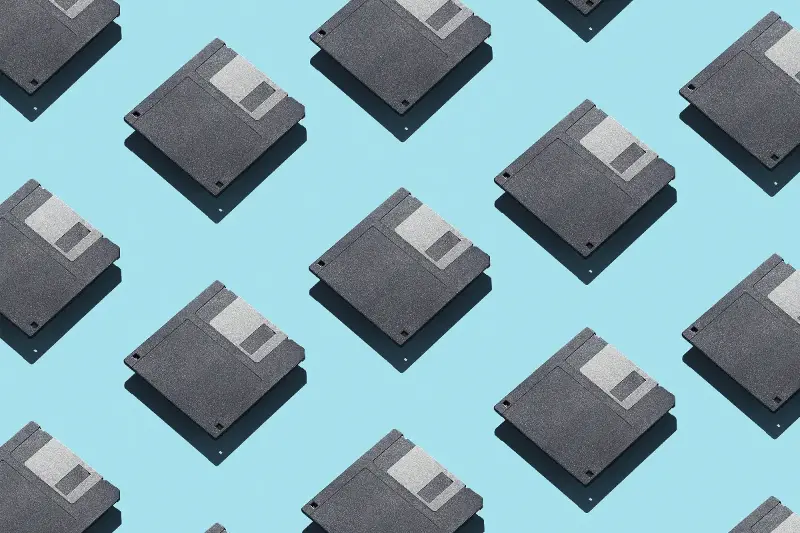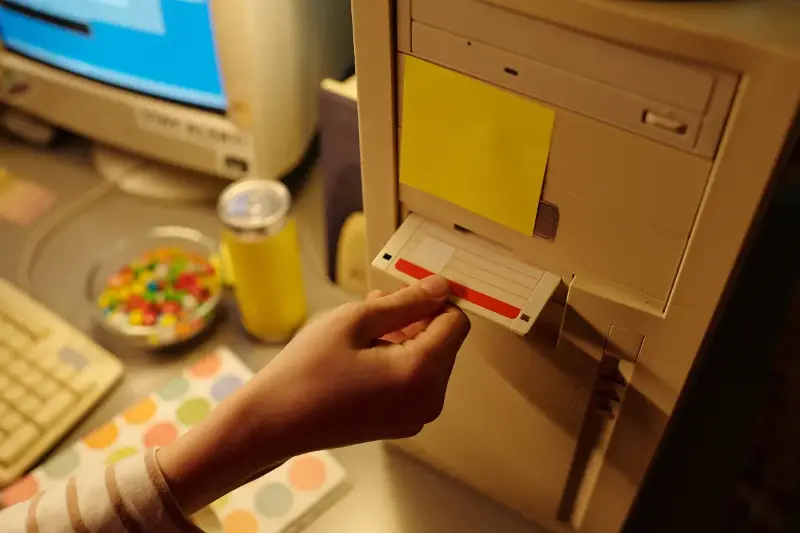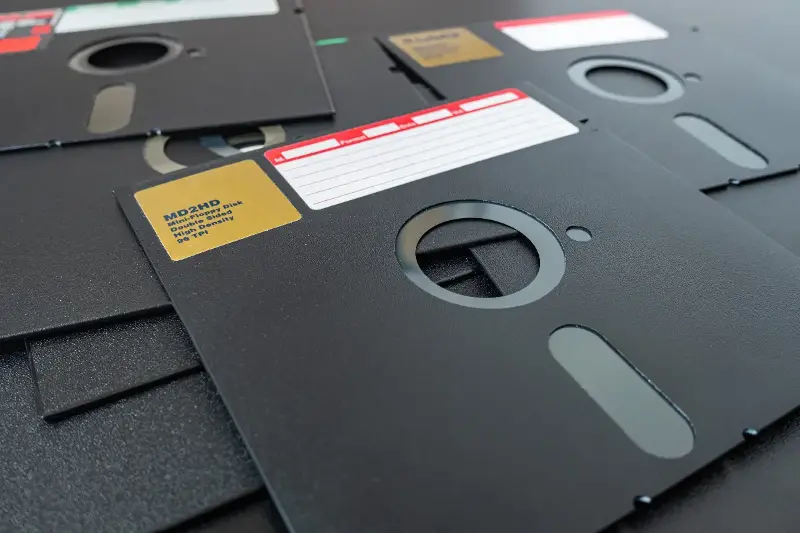Imagine a world before the cloud, USB drives, or blazing-fast fibre-optic connections. Picture the gentle click of a disk being inserted, the comforting whirr as data is read—and you’re at the dawn of home computing, where floppy disks reigned supreme.
For many, the floppy disk is a symbol from another era, tucked away in desk drawers or museum exhibits. Yet, this humble piece of plastic and metal once changed the way families, students, and workers shared and stored information. Let’s rewind the tape—well, disk—and discover why its story still matters today.

A Revolution Begins – The Birth of Floppy Disks
When IBM introduced the first floppy disk in 1971, it was a marvel of convenience: a flexible, 8-inch square, it could store an impressive 80 kilobytes of data. To put that into perspective, just one high-resolution photo from your phone today would need at least 100 floppies!
The floppy made its way into homes, schools, and workplaces by the late 1970s and 80s, rapidly transforming how information travelled. Before floppies, sharing data meant clunky reels of magnetic tape and physical paperwork. Now, with a simple, pocket-sized square, anyone could move files from one machine to another with ease.
Shrink to Fit – Innovation Drives Change
Technology rarely stands still. Designers quickly sought ways to make floppy disks smaller yet more powerful:
- The 5.25-inch floppy soon followed, offering up to 360KB of space and fitting neatly into the first wave of home computers—from the Apple II to the Commodore 64.
- By the mid-1980s, the 3.5-inch floppy arrived—a sturdier plastic shell, a neat little metal slider, and a whopping 1.44MB of space. This compact size was a game-changer, making it the format of choice for everything from homework to office presentations.
With these improvements came exponential growth. Software like games, documents, and photos could now be shared by simply passing a disk to a friend or family member. The phrase "Save it to disk" became part of everyday conversation.

Shaping Daily Life – Floppies in the Home
The influence of floppy disks extended far beyond simple storage. They fostered a sense of community among early tech enthusiasts, who eagerly swapped disks loaded with new programs or eagerly awaited a friend’s return from the computer shop with the latest update.
Consider a few everyday uses from the floppy era:
- Sharing Family Memories: Parents archived precious family photos and letters.
- Homework on the Move: Students carried assignments between home and school, no longer fearing lost papers.
- Home Business Made Easy: Budding entrepreneurs could store spreadsheets, invoices, or mailing lists and quickly update them as needed.
Floppies helped families learn, connect, and build together—laying a crucial technological foundation for the collaborative homes we see today.
Setting the Stage for Digital Evolution
It’s easy to chuckle at their tiny data limits now, but floppies pioneered ideas we depend on today. Their influence is hidden in plain sight:
- The computing world’s love of portability began here, paving the way for USBs, SD cards, and even cloud storage.
- The graphical 'save' icon—still shaped like a 3.5-inch disk—reminds us of floppies every time we preserve a file.
- Emphasis on user-friendly home technology blossomed as floppies proved that anyone, not just engineers, could master data.
When CD-ROMs, DVDs, and then flash memory arrived, the sun set on the floppy age. Yet, those early innovations still echo each time we save, share, or transfer digital memories.

Looking Back to Leap Forward
As we scroll through streaming playlists or back up smartphones, it’s worth pausing to remember how far we’ve come since the days of the humble floppy disk. Their story is more than nostalgia—it’s a blueprint of progress.
Could today’s family gadgets be tomorrow’s vintage treasures? Will our current storage solutions inspire the next big leap? The journey from floppy disks to the cloud reminds us that every breakthrough starts small, quietly changing our homes—and futures—one click at a time.
